Uygurs' Costumes, Adornments Splendid as Summer Flowers
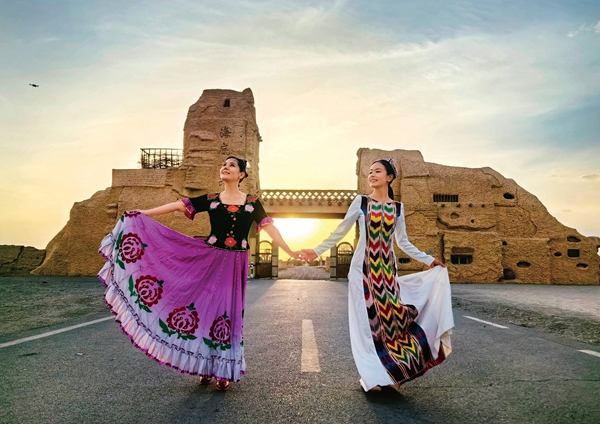
The Uygurs, who live in northwest China's Xinjiang Uygur Autonomous Region, enjoy wearing embroidered hats, clothes and shoes. The Uygurs' costumes and adornments, which are as splendid as summer flowers, embody the ethnic group's traditional cultural elements and aesthetic tastes.
The Uygurs mostly live in the oasis of the Tarim Basin, in the south of Xinjiang Uygur Autonomous Region. In their long history, the Uygurs have developed a unique clothing style, which is characterized by rich colors, ingenious designs and patterns of elegant simplicity.
The Uygurs, who are great lovers of nature, pay much attention to what they wear. As a result, elements of nature, especially flora, are the inspiration of the designs of traditional Uygur costumes.
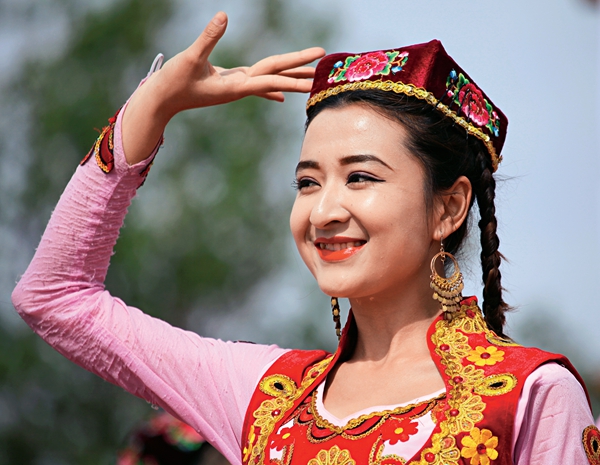
Traditional Uygur men's wear, which is usually in white and black, fits loosely. The accoutrements, including a shirt, coat, robe, and sash, are made of fine textiles. The shirt is a pullover of thigh- or knee-length. Young men and boys' pullovers are usually sparsely embroidered and are worn with coats and sashes. The sashes, which are mostly made of pinstripe cotton cloth, serve as both fasteners and ornaments. Some of the items are embroidered with floral patterns.
Uygur men's pants are in a fashion similar to the slouchy Harem style. The pants are made from various textiles or animal hides. However, suit pants and jeans are now more popular among the men.
Compared with men's wear, the clothing of Uygur women is more colorful. Also, the women's clothing is decorated with more ingenious designs. The Uygur women's wear includes blouses, coats of various lengths, sleeveless jackets, pants and skirts. Young Uygur women love to wear clothes in bright colors, such as red, green and yellow, which reflect their ardent enthusiasm and vigorous vitality. Older women prefer clothing in modest hues, such as black, blue, and dark green.
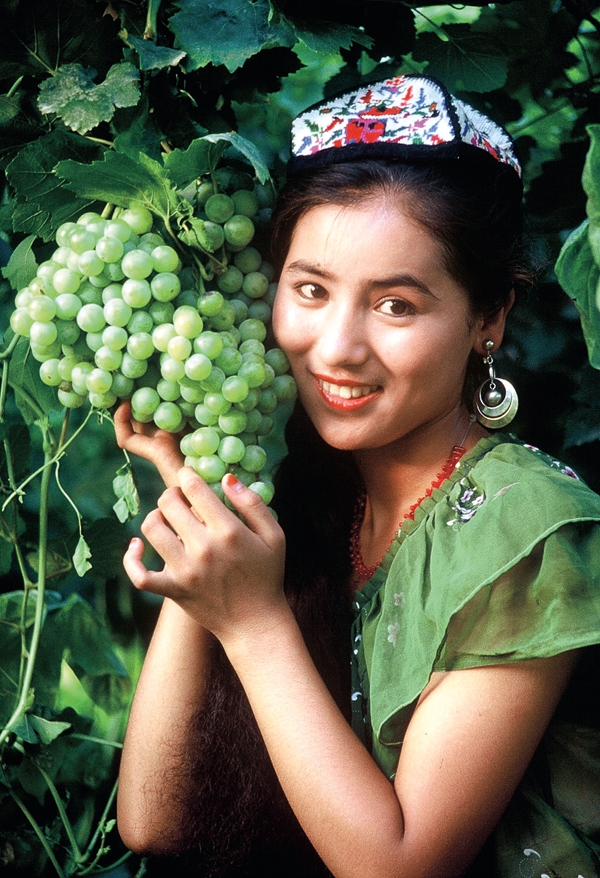
Uygur women's coats have high or flat collars, with front or side openings. The coats are matched with calf-length tube skirts.
Skirts, which are centerpieces of Uygur women's wear, are made from various textiles. The most distinguished textile is Atlas, or Etles, elastic, lustrous silk with tie-dyed patterns. In summer, Uygur women wear one-piece dresses of Atlas and neatly fit button-down waistcoats made of pleuche (velvet-like fabric). In winter, the women wear long overcoats and embroidered leather boots.
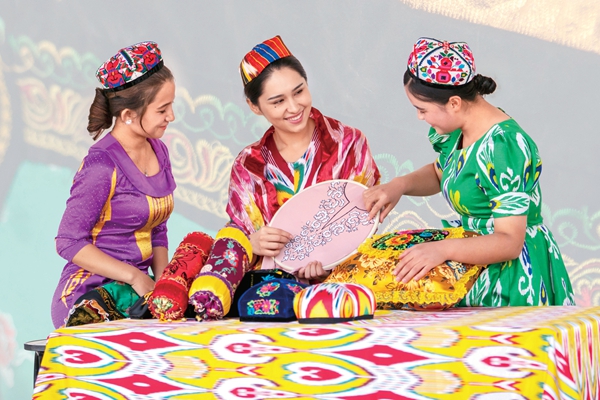
During the important events in the Uygurs' lives, such as holidays and visits to relatives and friends, Uygur women often wear their Atlas dresses and finest jewelry. As the splendid silk flutters down the city street or country roads like rosy clouds, you might understand why the Uygurs laud the precious fabric as conveying the spirit of spring.
A key part of the Uygurs' apparel is their headwear, colloquially called flower hats. The Uygurs, regardless of age, all like to wear such hats. The hats are embroidered with various patterns, which embody the people's desire to live happy, beautiful lives.
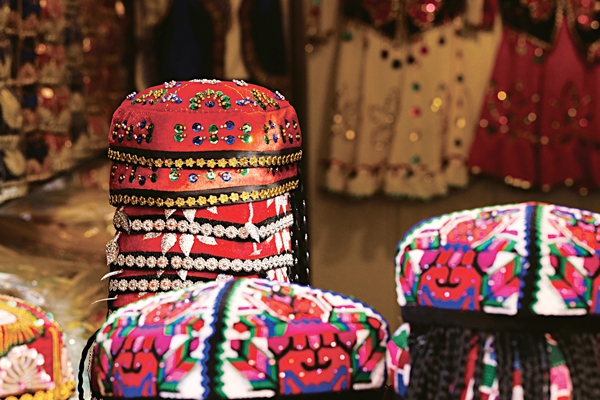
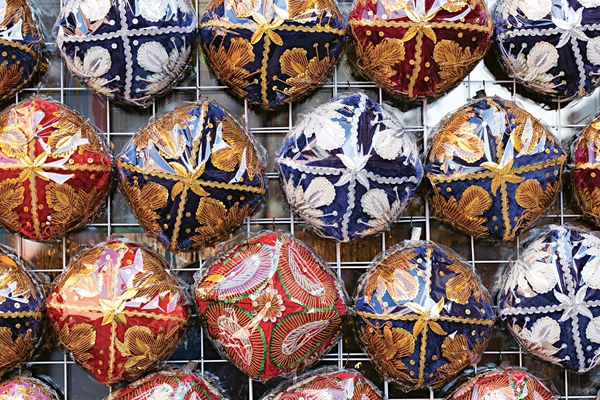
During the Tang Dynasty (618-907), men of the Western Regions, a historical name for the regions west of the Yumen Pass (including today's Xinjiang), wore peaked felt hats with fold-up brims. During the early Qing Dynasty (1616-1911), the headwear evolved into a skull hat, with four corners at the top. During the following centuries, the techniques of making the hats continued to develop, and the hats' designs and materials have become more diversified.
In addition to their practical functions, such as protection against heat and cold, the Uygurs' flower hats are a key factor in their social dress code. The local custom requires Uygur men to wear the hats during formal social events, such as public activities, visits to their relatives and friends, and celebrations of festivals. As the times have changed, and people are more open-minded, many Uygurs don't wear hats or scarves, except during such occasions as funerals or important ceremonies.
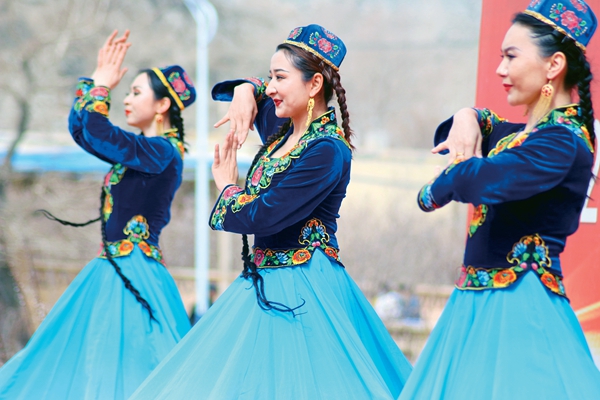
The Uygurs are the descendants of nomads, who lived in China's western borders more than 1,000 years ago. Boots, which are fit for their herding and hunting lifestyle, have become part of the ethnic group's traditional costume. Today, Uygurs wear both boots made of cattle or sheep hide and modern shoes, as well as the cover-shoes. The boots for women are often lavishly embroidered.
From head to toe, the Uygurs' clothes and adornments are symbolic of the culture, customs, and history of the ethnic group.
Photos from VCG and Tuchong
Source: China Today
(Women of China English Monthly May 2024)
Editor: Wang Shasha
Please understand that womenofchina.cn,a non-profit, information-communication website, cannot reach every writer before using articles and images. For copyright issues, please contact us by emailing: website@womenofchina.cn. The articles published and opinions expressed on this website represent the opinions of writers and are not necessarily shared by womenofchina.cn.








.jpg)

 WeChat
WeChat Weibo
Weibo 京公网安备 11010102004314号
京公网安备 11010102004314号